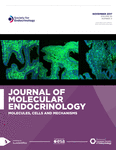The Krüppel-like factors in female reproductive system pathologies
- Rosalia C M Simmen⇑,
- Melissa E Heard,
- Angela M Simmen1,
- Maria Theresa M Montales,
- Meera Marji,
- Samantha Scanlon and
- John Mark P Pabona2
- Department of Physiology and Biophysics, University of Arkansas for Medical Sciences, Little Rock, Arkansas 72205, USA
1Department of Obstetrics and Gynecology, University of Michigan Health System, Ann Arbor, Michigan 48109, USA
2Department of Internal Medicine, Harlem Hospital Center, Columbia University Medical Center, New York, New York 10037, USA
- Correspondence should be addressed to R C M Simmen; Email: simmenrosalia{at}uams.edu
Abstract
Female reproductive tract pathologies arise largely from dysregulation of estrogen and progesterone receptor signaling, leading to aberrant cell proliferation, survival, and differentiation. The signaling pathways orchestrated by these nuclear receptors are complex, require the participation of many nuclear proteins serving as key binding partners or targets, and involve a range of paracrine and autocrine regulatory circuits. The members of the Krüppel-like factor (KLF) family of transcription factors are ubiquitously expressed in reproductive tissues and have been increasingly implicated as critical co-regulators and integrators of steroid hormone actions. Herein, we explore the involvement of KLF family members in uterine pathology, describe their currently known molecular mechanisms, and discuss their potential as targets for therapeutic intervention.
- Revision received 20 January 2015
- Accepted 4 February 2015
- Made available online as an Accepted Preprint 5 February 2015
- © 2015 Society for Endocrinology











